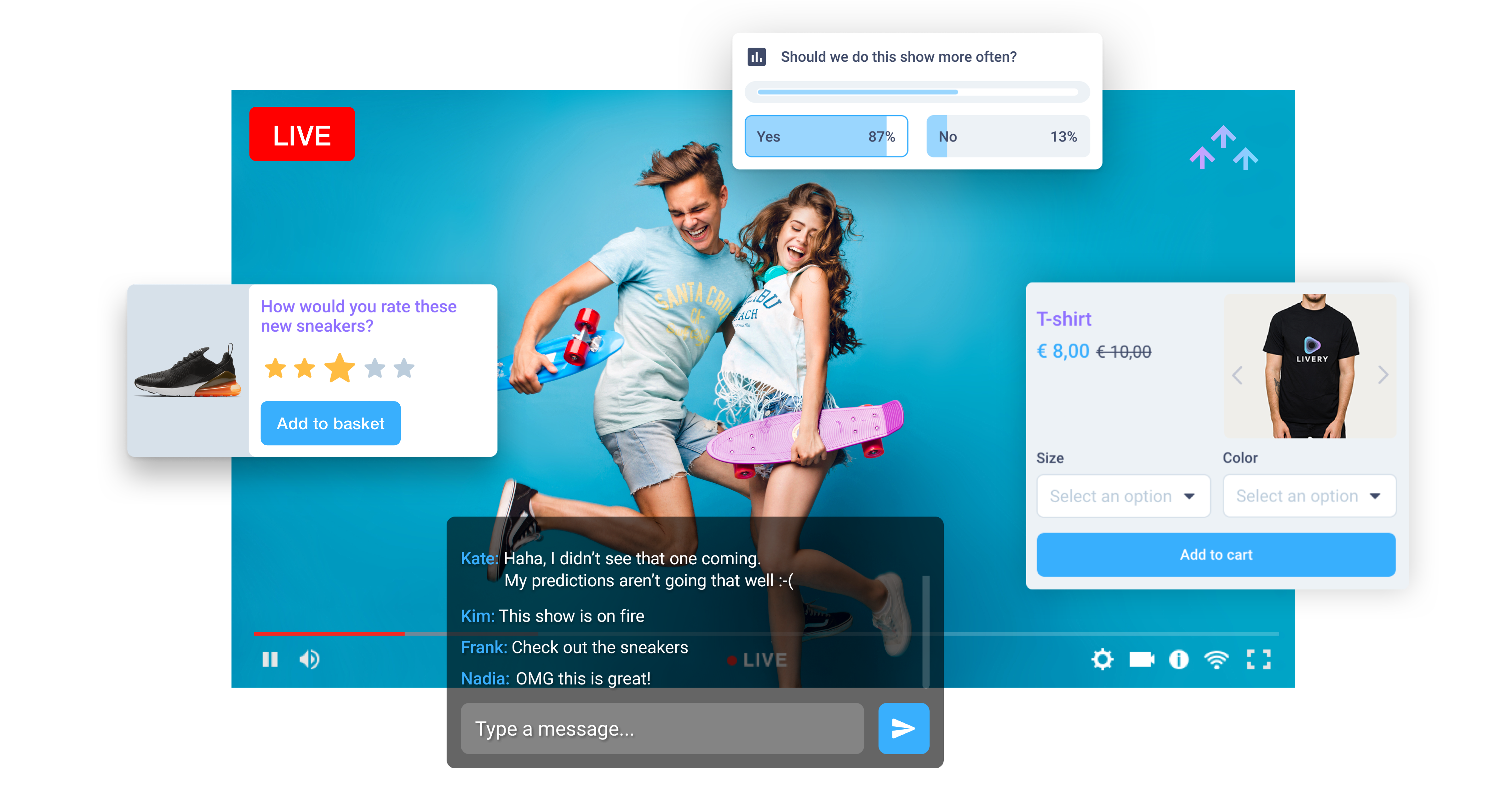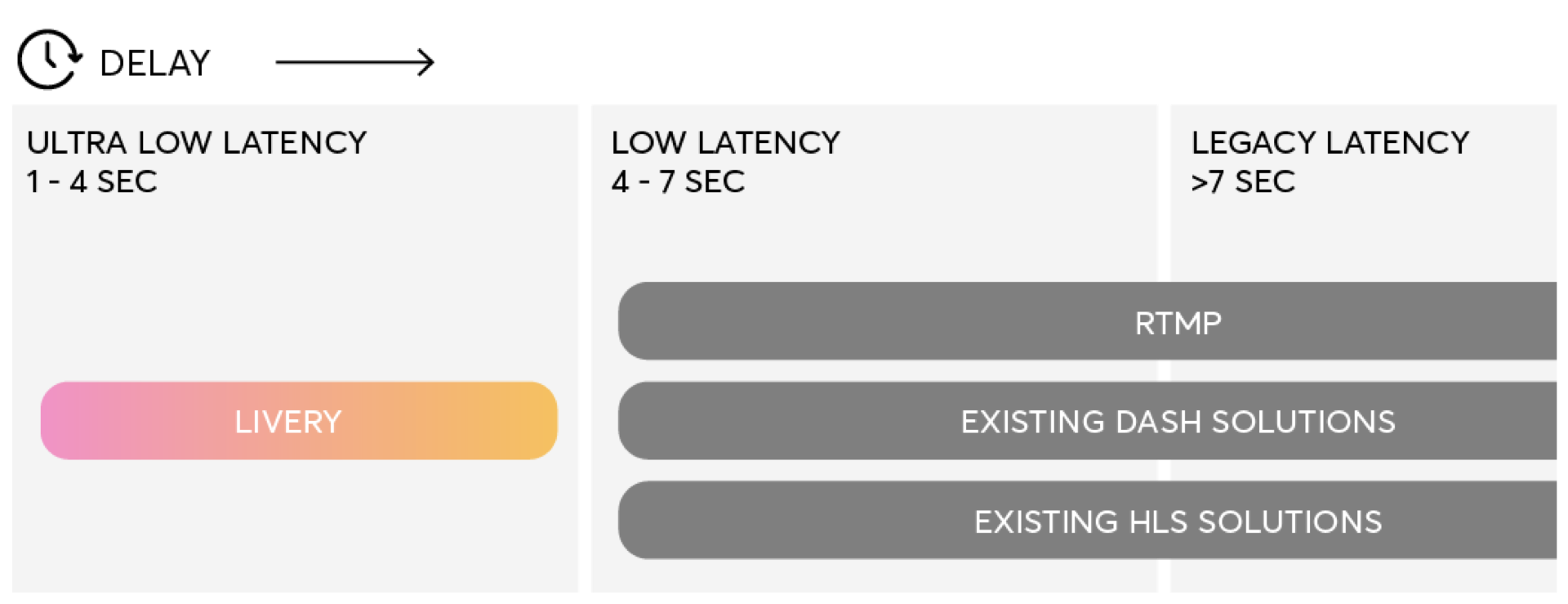How does Livery compare to Amazon IVS?
If you’re ready to turn your livestreams into an engaging experience that converts, you’ve probably considered Amazon IVS and Livery. But which platform is the better choice to make it happen?
Here are the major differences between Livery and Amazon IVS for interactive live video:
Lower your video latency with Livery
Amazon IVS offers live video at 5 seconds latency. At Livery, we go as low as 1 to 3 seconds. Even a few extra seconds of video delay can make an interaction seem pointless. Why engage with a poll related to something that is no longer on the screen?
Additionally, our synchronization option makes sure every viewer receives the same video frame at the exact same time, regardless of their internet connection or device, making it fair for every user. Amazon IVS doesn’t offer sync.


One of the cornerstones of the Livery platform is our ready-to-use interactions. We offer everything you need to create an interactive livestream right out of the box – no developer needed.
These interactions display on top of your live video and take your event from a simple stream, to an experience. Think chat, gamification, e-commerce, Q&A (including moderation / filter options), ratings, predictions, and more. If you want something a bit more custom, you can do that too using our API.
Amazon IVS provides you with no interactivity out of the box. Instead, you’ll need to develop it all yourself from scratch using their API.

What’s the experience like as a video host?
If you’ve hosted a live video before, you know how important it is to keep an eye on viewer comments and feedback. You need insights to “read the room” and keep the livestream flowing – and you need them now, not later.
With Livery, you get real-time feedback in the management system or teleprompter (if you have one). Keeping an eye on chat, votes, polls and Q&A in real-time is crucial for succesful live video.
Which the default Amazon IVS setup, feedback into the studio (portal or teleprompter) is impossible. This is because the interaction triggers are included in the metadata of the video, so no server is used for the interactions.
Designed for efficiency: get more for less
While both Amazon IVS and Livery use transparent pay-per-use pricing models, Amazon IVS can quickly become cost prohibitive. Depending on the region, scale, and quality of your video, you could easily end up paying 3x to 5x more with Amazon IVS while receiving significantly less out-of-the-box functionality.
With Livery, you get more for less. Click the button below to see for yourself.

Livery lets your audience see the livestream closer to realtime
The streaming protocol is what determines how your data is delivered to your audience. The protocol takes your video and breaks it up into pieces to make it easier to send through the internet. The smaller the piece, the quicker it sends.
Livery’s protocol, (ULL-CMAF for those of you that want that detail), can break your video stream up into smaller chunks than Amazon’s protocol, (L-HLS), meaning that your video data is quicker with Livery.
Overall comparison
To get a complete overview of all the differentiators between Livery Video and Amazon IVS, check out our cost comparison page.
You're in good company

book a demo
We offer a 20-minute live demo to experience Livery.
Select your preferred date or click here to get a first impression.
